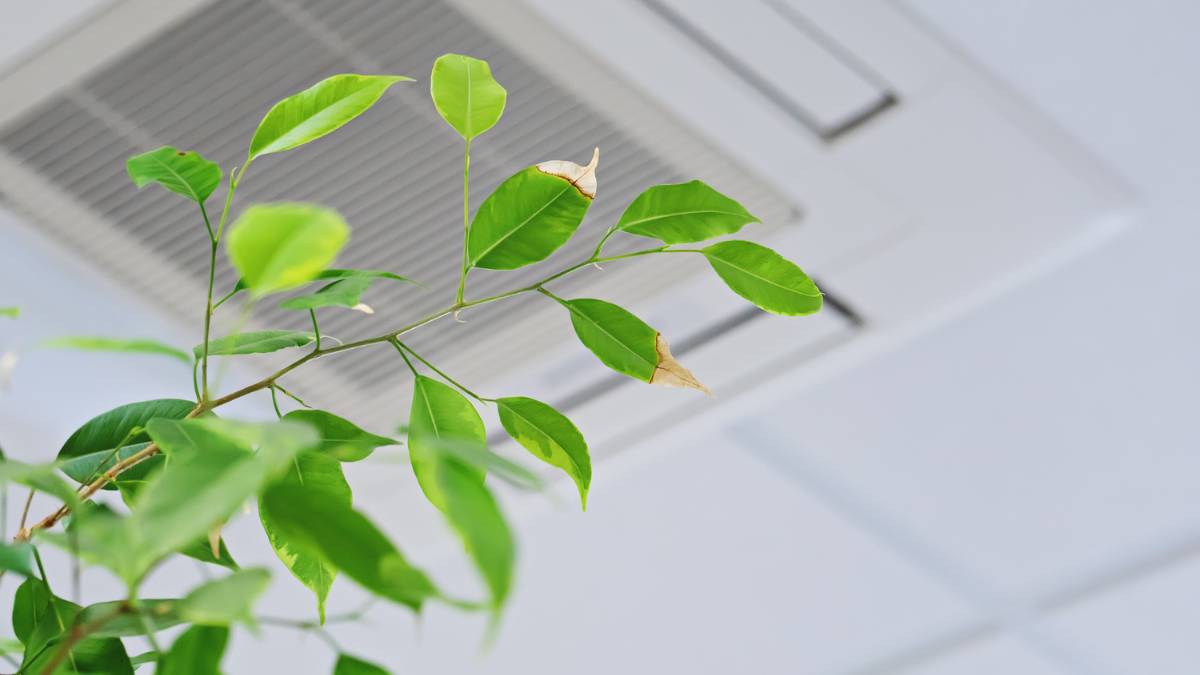Last Updated on February 24, 2025 by Kravelv Spiegel
Your home is more than just an address; it’s nothing short of a personal sanctuary, ultimate escape, and an essential pillar of your private life. And a fundamental element in this equation is the quality of the air enveloping you within your own space.
Well, have you ever noticed that when the air in your home feels fresh and clean, your mood simply soars, and you feel you are positively buzzing? Conversely, when the air is stuffy or filled with irritants, it can leave you feeling less than your best. Poor indoor air quality can be like an invisible foe, affecting your health and comfort without you even realizing it.
Let us take a look then at a short list of seven tips you can leverage to transform your home into a healthy, invigorating area where your family will get all it needs to truly thrive.
Regular Cleaning and Dusting
One of the easiest ways to improve indoor air quality is to keep air conditioning emergencies at bay. Dust, pet dander, and pollen can accumulate in your living space, leading to poor air quality. Regular cleaning and dusting help reduce these allergens and irritants. Vacuum carpets and rugs, mop floors, and clean surfaces using a damp cloth to trap dust particles. Don’t forget to clean and change your vacuum filters regularly to ensure they capture fine particles effectively.
In addition to vacuuming, consider using a microfiber cloth or duster to trap dust and allergens effectively. Microfiber materials are excellent at capturing tiny particles and preventing them from becoming airborne.
Proper Ventilation
Good ventilation is essential for maintaining fresh indoor air. Open windows and doors to allow the exchange of indoor and outdoor air. Use exhaust fans in kitchens and bathrooms to remove excess moisture and pollutants. Additionally, consider installing a whole-house ventilation system to provide a constant flow of fresh air, especially in tightly sealed homes.
To maximize the benefits of proper ventilation, create a cross-ventilation system by opening windows on opposite sides of your home. This setup promotes better air circulation and helps remove stagnant air, odors, and pollutants.
Regular HVAC Maintenance
Your HVAC infrastructure plays an absolutely massive role in maintaining (or ruining) indoor air quality. Make sure to schedule regular maintenance for your HVAC system to keep it in optimal shape and pick a professional air conditioning repair service you can rely upon. Regular maintenance includes cleaning and replacing filters, inspecting and cleaning air ducts, and ensuring the system operates efficiently. An efficiently functioning HVAC system will help remove particles and pollutants from the air effectively.
When it comes to HVAC maintenance, consider setting a regular schedule and keeping a maintenance log. This will help you keep track of filter replacement dates, duct cleaning, and any necessary repairs, ensuring your HVAC system operates at peak efficiency.
Control Humidity Levels
Excessive humidity can create the perfect breeding ground for mold and mildew, significantly impacting the quality of the air you breathe indoors. To address this issue, think about using dehumidifiers capable of keeping the humidity levels within the sweet range of 30% to 50%. Make sure to fix any plumbing leaks promptly, as they can contribute to high humidity levels. Proper ventilation also helps control humidity, as mentioned in the previous tip. And if you want to run with this idea even further you can consider using smart humidity monitors or hygrometers.
Air Purifiers and Filters
Air purifiers and filters are effective tools for improving indoor air quality. HEPA filters are real champs when it comes to trapping tiny particles as small as 0.3 microns – thick dust, pollen, and even those pesky pet dander bits. Choose air purifiers equipped with HEPA filters for the best results. Additionally, consider installing HVAC filters with a MERV (Minimum Efficiency Reporting Value) rating of 11 or 12 to trap finer particles.
When selecting an air purifier, opt for one with multiple filters, including pre-filters and activated carbon filters. These additional layers can help remove odors, gases, and larger particles, improving the overall air quality in your home.
Indoor Plants
Houseplants not only add a touch of nature to your home but also help improve air quality. Certain indoor plants, such as spider plants, snake plants, and peace lilies, can effectively filter and purify the air by absorbing toxins and releasing oxygen. Just be sure to research the specific care requirements for the plants you choose, since they tend to take massive swings.
To maximize the air-purifying benefits of indoor plants, place them strategically in different rooms of your home. For example, you can position snake plants in bedrooms, spider plants in living areas, and peace lilies in the bathroom to ensure a broad coverage of air purification.
Eliminate Smoking Indoors
Truth be told, cigarettes and other tobacco products are likely the number one troublemakers when it comes to affecting the air you breathe inside your home and the health of your family. It’s loaded with nasty chemicals that can seriously mess with your health. It needs to be eliminated from your home. Establish a strict no-smoking policy indoors to prevent the contamination of indoor air. Designate a specific outdoor area for smoking to protect the indoor air quality and the health of all occupants. If you or your guests smoke, consider creating a designated outdoor smoking area with proper disposal facilities for cigarette butts and ashtrays.
Conclusion
Creating a healthy and cozy living environment begins with enhancing the air quality within your home. Always remember, that maintaining a clean, well-ventilated space, controlling humidity levels, embracing air purifiers and filters, putting an end to indoor smoking, opting for natural cleaning solutions, bringing in indoor plants, and scheduling regular HVAC maintenance are the building blocks of easier breathing and a healthier life within your sanctuary. Your home is your refuge, and these steps ensure that the air you breathe is nothing less than pure and safe.

